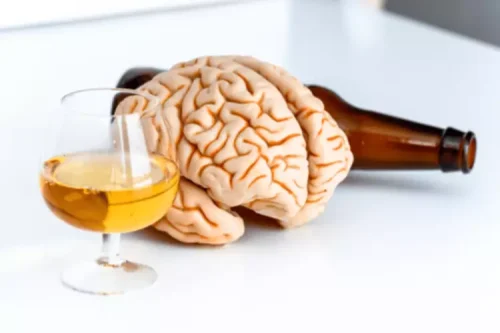
Almost 27% of intermediate familial alcohol dependents have sought help for their drinking problem. They tend to prefer self-help groups, detoxification programs, specialty treatment programs and individual private health care providers. They also have a later age of first drinking (average of 19 years) and a later onset of alcohol dependence at an average of 37 years.
What causes Alcohol Addiction?

The challenge with functional alcoholism lies in its very nature – it’s hard to spot. These individuals often don’t fit the stereotypical image of an alcoholic, making it difficult for friends, family, and even healthcare professionals to identify the problem. They may not experience the same level of obvious negative consequences as other types of alcoholics, at least not initially. Recognizing that each person’s experience https://ecosoberhouse.com/ with alcoholism is different allows treatment providers to create a customized plan that addresses their specific challenges and goals. This involves assessing the severity of their alcohol use disorder, identifying any co-occurring mental health conditions, and considering their overall support system. About half of functional alcoholics are married, 62 percent work full-time, and 26 percent have a college degree.
Short- & Long-Term Effects of Alcohol Addiction
Morning drinking relieves mild withdrawal symptoms, and the person’s life becomes centered around the use of small doses of alcohol throughout the day. Eventually alcohol’s cumulative effects lead to major medical complications and organic brain disorders. About one-third of young antisocial alcoholics seek treatment for alcohol addiction. They tend to go to self-help groups, specialty treatment programs, detox programs, and treatment with individual health care providers.
Need Addiction Support?
People in the chronic severe subtype are the most likely of any group to experience major depression, dysthymia, bipolar disorder, generalized anxiety disorder, social phobia, and panic disorder. They also may have addictions to cigarettes, marijuana, cocaine, and opioids. The functional alcoholic subtype accounts for about 19% of alcoholics and includes individuals in their early ‘40s. They start drinking around 18 years old but develop alcohol dependence later in life around the age of 37.
- Researchers found that 21.1 percent of alcoholics fall into this category.
- Some people may transition between different alcoholic types based on changing life circumstances, but this probability depends on various factors, including their response to treatment.
- When alcohol dependence develops in this type of personality, it can be identified by the subtype characteristics of pathological drinking and drunken comportment.
- The answer to this question might surprise one, but it is no, such people cannot, at least not all on their own.
Factors that Contribute to Young Antisocial Alcoholism

More members of this group have full-time jobs than any other, but their income level tends to be lower than the functional subtype. While this group is not especially likely to seek treatment, those that do tend to attend self-help groups, specialty treatment programs, detoxification programs, and private health care providers. Of 5 types of alcoholics all subtypes, the functional subtype is the least likely to have legal problems; they are the least likely to report problems due to their drinking. They have the highest education levels and incomes of all types of alcoholics. These are people that may seem to have their lives together; they may be the ones that others look up to.
- Around one quarter of those in this category seek help for their alcoholism.
- Additional alcohol research information and publications are available at
- These individuals often have a relatively short duration of alcohol dependence and typically do not exhibit other substance abuse issues.
- They also have the highest divorce rates, with 25.1% divorced, 8.6% separated and only 28.7% married.

The first step to creating a better life for yourself is getting professional help. Many of those in the grips of alcoholism choose not to seek help, but it doesn’t have to be that way. If you or a loved one fall into one of these types of alcoholism, know that there are options. In conclusion, exploring the five types of alcoholics reveals a tapestry of unique stories and paths to recovery.
- If you or a loved one is ready to overcome an alcohol addiction, reach out today.
- Additionally, therapy and counseling can help individuals and their families navigate the emotional and relational complexities that arise from alcoholism.
- This additional substance abuse is noted as co-occurring substance dependence, which can be caused by alcoholism or go on to cause alcoholism.

- Rather, they are meant to further the study of alcoholism and guide future research and prevention efforts.
- Chronic severe alcoholics often smoke and may also suffer from cocaine, opioid, and/or marijuana dependence in addition to alcohol addiction.
- Your health insurance company will only pay for services that it determines to be “reasonable and necessary.” The treatment center will make every effort to have all services preauthorized by your health insurance company.
- This group has attained a higher education level than all groups other than the functional subtype.
- These regular drinkers develop progressive habituation to alcohol’s toxic effects, followed by an irresistible need to drink.
- However, certain food groups also have benefits when it comes to helping with the discomfort of withdrawal symptoms and detoxification.